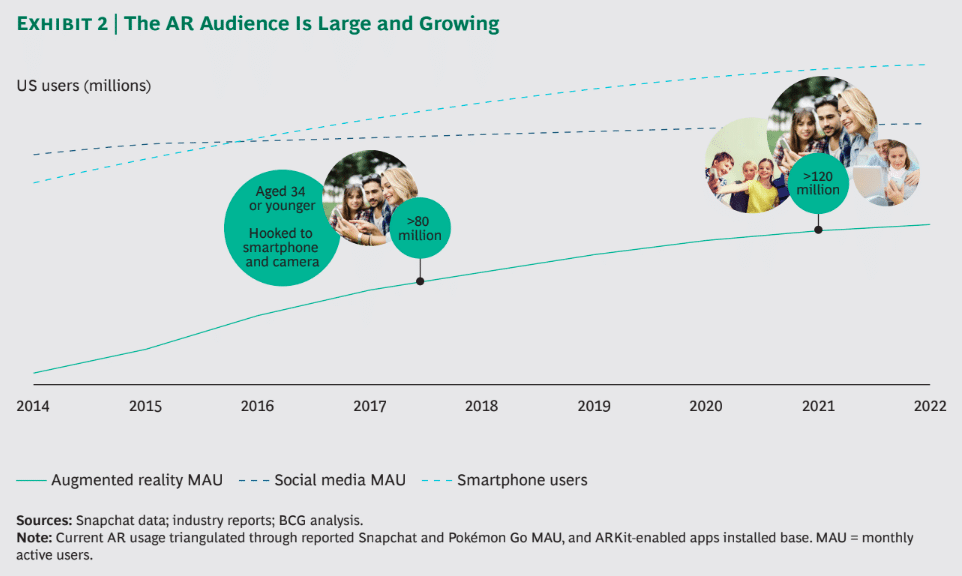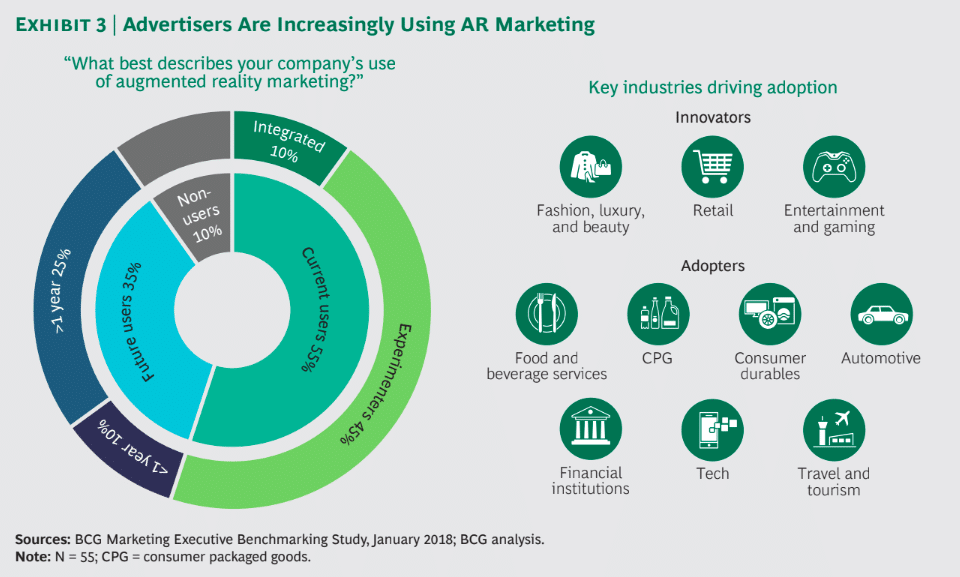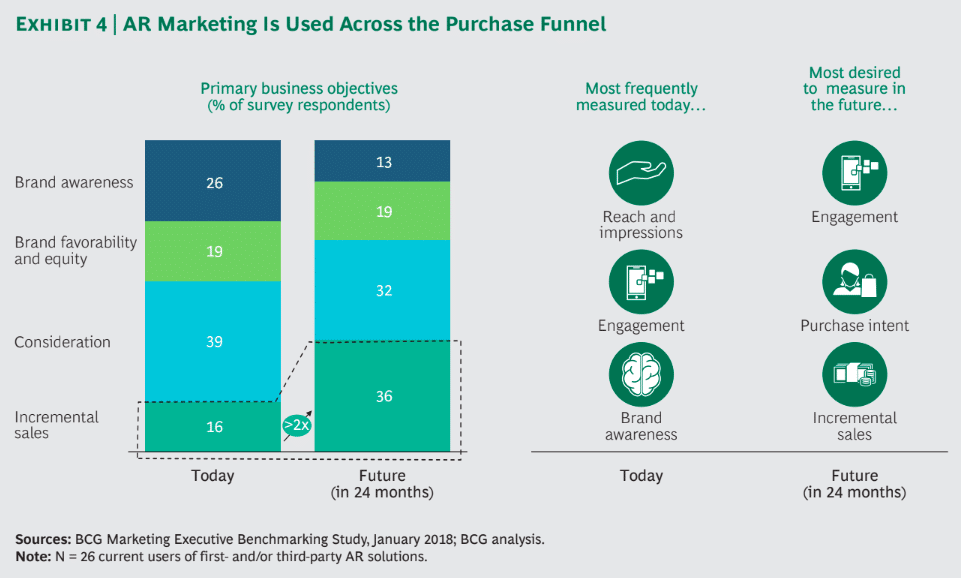
Data Point of the Week is ARtillry’s weekly dive into data from around the XR universe. Spanning usage and market-sizing data, it’s meant to draw insights for XR players, or would-be entrants. To see an indexed archive of data briefs and slide bank, subscribe to ARtillry Pro.
Will advertising be one of the many opportunities that find a home in immersive computing? In VR, though engagement potential is high, the scale and reach just aren’t there yet to get advertisers excited. And advertisers are very reach driven. But what about AR, especially the mobile variety?
There’s certainly more reach and scale there, due to smartphone ubiquity and the growing subset of AR-compatible devices. But that’s more of an addressable market than an actual one. AR usage is still relatively low and session lengths are short, thus diminishing ad inventory.
But there’s certainly lots of potential for usage growth, as well as per-session engagement levels that can be achieved in AR. As we’ve examined, advertising KPIs like purchase intent can increase significantly through well-designed native AR ad experiences like product visualization.
More proof points along those lines were released recently in a Snap-sponsored study (keep that in mind) from Boston Consulting Group. It pegs the U.S. AR audience at greater than 80 million monthly active users, growing to 120 million by 2021 — about half of U.S. smartphone users.

On the buy side, advertisers lag behind users (as always) but show promise. 45 percent of companies are in experimental phases while 35 percent project a 1-2 year horizon and 10 percent show real deployment. The latter includes AR ads like Michael Kors’ Facebook campaign.

As for the stage in the consumer purchase funnel where AR is making a mark, it’s mostly in “consideration.” This makes sense, as higher-funnel stages like awareness are better served by reach media like TV. More interactive media like search has always lived lower in the funnel.
Interestingly, when asked where AR will be in two years, BCG’s survey respondents see it moving down the funnel. That makes sense, given that AR’s melding of the digital and physical worlds makes it a natural fit for proximity-based engagement like Google Lens or in-store overlays.
This could make AR fill an important gap in the “last mile” to in store transactions (where most U.S. retail spending happens). It’s key area of the purchase funnel that’s harder to track digitally, despite failed deployments of beacons and mobile payments. It’s the holy grail of local advertising.
As a side note to the location tracking angle, this study’s sponsor, Snap, acquired Placed last year. Placed has some of the best IP out there for proximity based mobile location tracking for the purposes of analyzing/attributing online-to-offline commerce. (see our interview from a former life).

But it’s not all good news for AR in advertising. Aligned with some of our past cautious analysis of the opportunity, it should be noted that advertisers are still reticent. Top reasons for holding back include a lack of scale (as mentioned above), internal expertise and unclear ROI.
This speaks to the need for education because the KPIs for AR’s advertising efficacy are certainly there. Advertisers just have to be made aware en masse, which will take a while if history is any indication. Their acclimation to smartphone advertising is still underway, 10 years later.

But it goes well beyond awareness and even real interest and adoption. Real AR ad campaign effectiveness and sustained spending will come down to execution. And that will be an even longer learning curve, which will be all about native ad design and measuring the right things.
In the meantime, there will be lots of misfires and porting of legacy media to AR. It’s a necessary process, like we saw in early days of smartphone ads. Heck, we still see it, given that the desktop-inherited static banner ad won’t die. But AR’s eventual payoff will be big for those who get it right.
For deeper XR data and intelligence, join ARtillry PRO and subscribe to the free ARtillry Weekly newsletter.
Disclosure: ARtillry has no financial stake in the companies mentioned in this post, nor received payment for its production. Disclosure and ethics policy can be seen here.
Header image credit: Facebook
